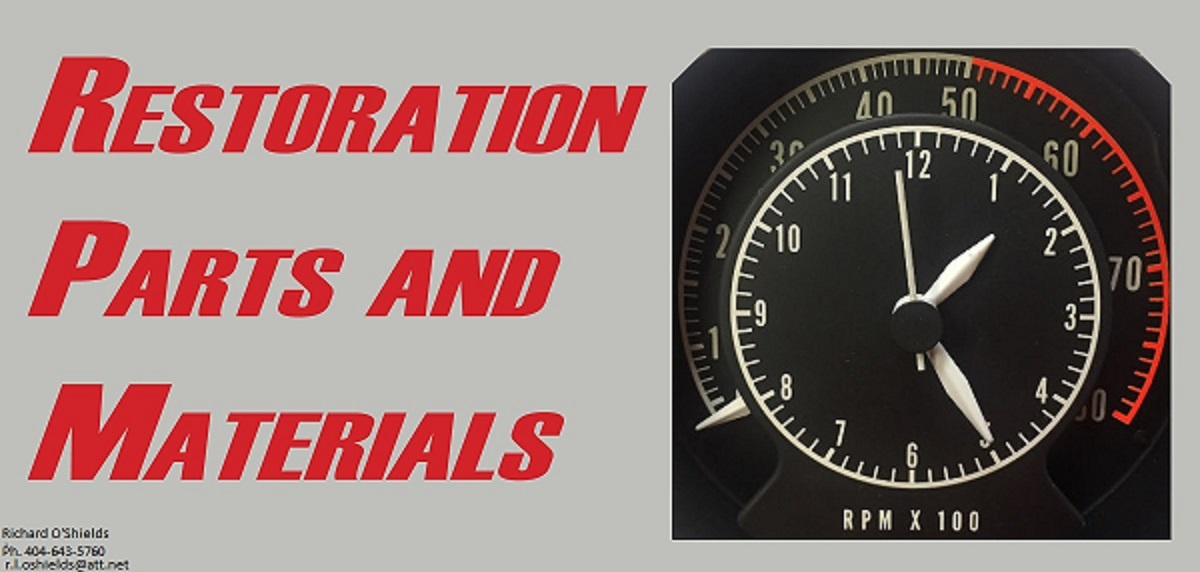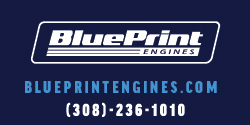View attachment 146791
Any master cylinder used with manual brakes must have a machined recess in the back of the piston to accept the rubber pushrod retainer (most have it, but be sure check).
View attachment 146792Each body style requires a specific pushrod, which can be recycled from a drum setup, but be sure to pull the pushrod out of the old cylinder before removing it from the car - way easier that way. Alternately, you can use an new MP adjustable pushrod, p/n P5249316.
View attachment 146793If you use a 4-to-2 bolt master cylinder adapter with power brakes be sure it places the primary piston in the exact stock location -- not all do (the excellent one from AR Engineering does.) Alternately, you can, on some cars, swap to a later 2-bolt booster such as this.
View attachment 146794Whichever master cylinder you choose, it must be “bench” bled. This is actually way easier to do on the car. All you need are a set of homemade bleeder tubes. Pump very slowly, to the floor, at least 12 times. An even easier, though sloppier, way to accomplish the same task is to hook up the car’s lines, then use each fitting as you would a bleeder screw. Requires an assistant. Makes a mess.
View attachment 146795Out back, your drums are fine, no matter what size
View attachment 146796
Imperial rear discs are more trouble than they are worth. Trust us on this!
MISCELLANEOUS CAVEATS
Four other points may require attention, depending on the year of your high performance Mopar:
>> What to do if your car doesn't have a power booster? Simple. Forget it! Unless you have a 5,000-pound wagon, you'll do just fine without it. You can tailor the pedal pressure to your liking by playing with master cylinder diameters. Smaller cylinder = less pedal pressure required. Larger cylinder = ”harder” pedal, less travel. In any case, if you are either staying with, or swapping to, a manual cylinder, be sure that the unit you use has the machined recess in the back of the piston for the rubber pedal-pushrod retaining ring. Most rebuilt master cylinders we've inspected all have this recess. Then, reinstall the pushrod salvaged from your original (drum) cylinder, with a new rubber retaining ring (Mopar p/n 2074960, discontinued, but they are usually supplied with most rebuilt master cylinders).
>> If you have a pre-'67 car, it wasn't equipped with the desirable dual brake circuit setup. You could embark on the unenviable task of locating the rare '66 disc-brake master cylinder, or, you can take this as the ideal opportunity to convert to the '67-up tandem master cylinder/plumbing/tee setup. With a junkyard donor vehicle, this is a straight bolt-in swap.
For a really fast, slick, and easy way to upgrade to dual circuit brakes, see
"Pumping Points", Mopar Action, April 2005 issue. This swap even works if you're lazy and are staying with drums!
>> 1970 and earlier cars used left-hand thread lugs on the driver's side. If you're determined to retain these, you'll have to change the studs in one of the new rotors to LH thread.
>> In the mid-1970s, Chrysler eliminated the rear brake residual pressure valve from the master cylinder. Its function was to prevent any air from sneaking into the system via the rear wheel cylinder cups. In its place, Chrysler substituted "expanders" in the rear wheel cylinders. (Expanders are dish-shaped steel inserts that exert outward pressure on the cups.) If you should decide to use a master cylinder from a 1975-up car, be sure you have the expanders in your rear wheel cylinders. For at least 20 years they have been universal in all replacement wheel cylinders and rebuild kits.
>> No matter which master cylinder you decide upon, be sure you bench-bleed it thoroughly before you hook it up; see a factory service manual for procedures, but remember that it's actually much easier to bench-bleed with the cylinder mounted on the car, but with bleeder tubes hooked up.
>> To avoid confusion in the rotor size / caliper type selection and parts procurement process, think of the braking components as complete systems. There are two rotor sizes, and two types of caliper (pin and slider). You can swap amongst the setups as longs as you use all the correct, matching components. If you go for the large rotors, you must have caliper adapters designed for such; if you use slider calipers, you must have slider-version adapters.
HOSE JOB
The best brakes in the world are useless if there’s a pressure leak. Top quality hoses can make a significant difference in pedal feel, not to mention reliability. Goodridge makes a line of DOT-approved braided stainless hoses and fittings that are like icing on the cake. Here’s what you need to swap the Wilwoods onto most Mopars:
2- D39015 15" hose, #3, 90-deg fitting
2- 2021-2-3S 1.8" pipe to #3 JIC fitting
2- FM10324-03P 3/16" inverted flare to #3 JIC fitting
With the above, it’s a total bolt-on!
If you can’t find a local source for these, an outfit by the name of Oil Filter Service Co. does mail and phone orders, and J&P Cycles has excellent on-line cataloging and ordering -
see sources.
WHEEL DEAL
Our parts list is as complete as possible, and we have taken great care to include virtually everything you'll need. Bear in mind, though, that 15" wheels are needed to clear the giant 11.75" rotors (see fig. ** ). If you can't bear to part with your mint 14" rallies, no sweat, we have the cure: Use the "optional" 10.87" HD rotors and adapters shown on the parts list.
WHOA JUICE
Silicone brake fluid (DOT-5) is another good idea. Besides the well known advantages of freedom from moisture absorption and a very high boiling point, it won't damage the $3000 paint job on your HemiCuda if you get a little sloppy bleeding the brakes.
Now for those owners of cars not covered above, here are some tips for braking upgrades and swaps:
'62-'72 A-BODIES (Dart, Duster, etc.)
If your car now has 9-inch drums, the first step up would be the 10" drums used on all '65-up 8-cyl cars. We frankly wouldn't drive an A-body over 40 mph with the 9-inch drums, for reasons having nothing to do with the brakes. The small ball-joint-to- knuckle bolts, which are loaded in shear, are known to snap, usually at the most inopportune time.
The 10-inch, ‘65-72 drums are a simple R&R bolt-on. You'll need a set of the 10" drum ball joints and the aforementioned larger bolts, of course. The next step up, incrementally, would be to use the factory 4-piston Kelsey-Hayes setup. This has the advantage (or disadvantage, depending on your point of view) of keeping the weird 4-inch bolt circle hubs. If you go this route, you'll still need to swap master cylinders and add a proportioning valve as we outlined in the main text. But these brakes aren’t cheap or common anymore, and are prone to piston siezing if left unattended for any length of time.
The ultimate swap would be the unicast rotors (either size) as outlined above. To do this, you'd need everything in our parts list plus a pair of upper control arms and all four ball joints from a '73-'76 disc-brake A-car. For factory sway-bar cars, the same caveats apply to the A-bodies as we outlined in the main text for the late-sixties B-cars. But then you’ll have brakes up the yazoo. Incidentally, this is what stops the famous Mopar Action “Green Brick”.
'73-'76 A-BODIES
These cars came in two flavors, drum and disc, with the drum cars being similar to the '72-down cars (see above), with the main difference being the use of the larger ‘73-up B/E-body inner wheel bearing. The disc-equipped cars already have unicast rotors, but they used slider-type calipers. The cheapo upgrade is just swap to semi-metallic pads (slider type) and be happy. You can also use the 11.75- inch rotors and yet keep your slider setup by simply using caliper adapters from a '76-up slider- equipped B-body (these were typical on the 2-door versions such as Cordobas). You can also go all the way to the less-likely-to- stick pin-type calipers. For this, just use the adapters on our parts list, along with pin calipers from a '73-up B-body. This is handy because the '73-up calipers use the same hollow banjo-bolt hose attachment method as the original slider calipers, and you'll be able to retain your original hoses.
'73-'75 B-BODIES (Charger, Satellite, etc.)
These cars are also factory equipped with unicast rotors, but they came with pin-type calipers. A change to the larger rotors requires only a simple adapter change (to the ones shown on the parts list) and nothing more. No knuckle or caliper swap is required. The calipers on these cars mount toward the rear of the car.
'76-UP B-BODIES (Cordoba, Fury, etc.)and ‘79-up R-BODIES (St. Regis, etc.)
This group obviously already has the big rotors, etc., as these are the primary “donor" cars for our swap. For H.D. runnin', though, be sure you've got the reinforced rotors and semimetallic pads, and you're ready to rock and roll. Cars equipped with slider calipers may, if desired, be converted to the K-H pin style via an adapter swap. Use the '73-up calipers (banjo-bolt hose type,) of course.
F-BODIES and SPINOFFS (Aspen, Mirada, Diplomat, etc.)
We're referring here to all Volarés, Aspens, Miradas, Diplomats, etc. These cars use the 10.87" unicast rotors and slider calipers. As we mentioned under the later-A-body heading, you can swap up to the 11.75" rotors by simply changing to the appropriate adapters. A changeover to pin-type calipers, if desired, also requires only an adapter change, being certain to use the '73-up style pin-type calipers.
‘65-‘73 C-BODIES
Early disc-equipped incarnations of these cars used Budd 4-piston brakes, later models had K-H pin type calipers. The K-H brakes are huge (1¼" thick), in fact, they are more closely related to D-truck and B-van brakes than they are to any other Mopar passenger car. C-body disc brakes can't swap to/from any other Mopar passcars, and vice-versa. They are, literally, a class by themselves.
Along with the rest of Chrysler’s models, C-bodies went to 1- piece unicast rotors in 1973 (actually, C-bodies made the sap in late '72). This necessitated a knuckle redesign. The result is simple: for good, lowbuck brakes, with ready parts availability, you need to find a junked (or parked, if you’re quick) 1973 (or late '72) disc-equipped C-cruiser, and take everything (incl. rotors, calipers, knuckles, hoses, adapters, etc.) You won’t need the control arms, since they are identical from 1965 thru ‘73. For cars now equipped with 4-piston brakes, you will, however, need to swap the lower ball joints; but this is a blessing in disguise: The needed ball joints are way more common (read: cheaper!)
Another option for C-bodies is the Scarebird kit, see Mopar Action's December, 2009 issue. This uses stock drum knuckles, lowbuck custom adapter brackets, and a clever mix of parts-store components.
READ IT AGAIN, SAM
A warning needs to be repeated at this point: If you plan to use the 11.75" rotors, you must have at least 15-inch wheels. This applies to all of the above swaps.
DIALING IT IN
Not much to do here except for getting the proportioning properly adjusted. Here’s the procedure that works for us: First, find a wide, lightly-traveled road and choose a day with light rain. Load the car with whatever’s typical for you, set the tire pressures, etc.
Begin with low speed stops. Keep increasing brake pedal pressure until one wheel locks. Adjust the valve so that it becomes random whether that wheel is a front or a rear. Having a friend nearby in a second vehicle can be helpful in determining which wheel is locking, but be careful! Adjust the valve so the wheel that locks is a front at least 9 out of 10 times, then go about 1/2 turn more. recheck at higher speeds, but safety first.
Adjusted this way, proportioning will be correct even on dry pavement. But if you ever find a rear locking first, don’t hesitate to readjust.
CONCLUSION
Comparing brakes to some of their contemporaries, stock '60s Mopar musclecars were somewhat advanced. Proof? Check out the brakes on, say, the '64 Pontiac GTO. Brakes? What brakes? 9½-inch drums, the same as a 6-cyl 2-speed Tempest. A '64 383 Plymouth Fury, though, had fat 11x3-inch drums - not too shabby for 1964, right?
The '71 Imperial had true, computerized anti-lock brakes (called Sure Brake) at a time when Mercedes probably didn't even know what ABS was! Tell that to the new owners from Stuttgart!
If you follow our instructions to a T, your classic Mopar can have braking power that not only complements its earth-rotating acceleration, but out stops many of the industry's best for the new millennium. The rest is up to you - and your tires!
THIS ENTIRE WORK COPYRIGHT © 1990-2017 BY RICHARD EHRENBERG



















